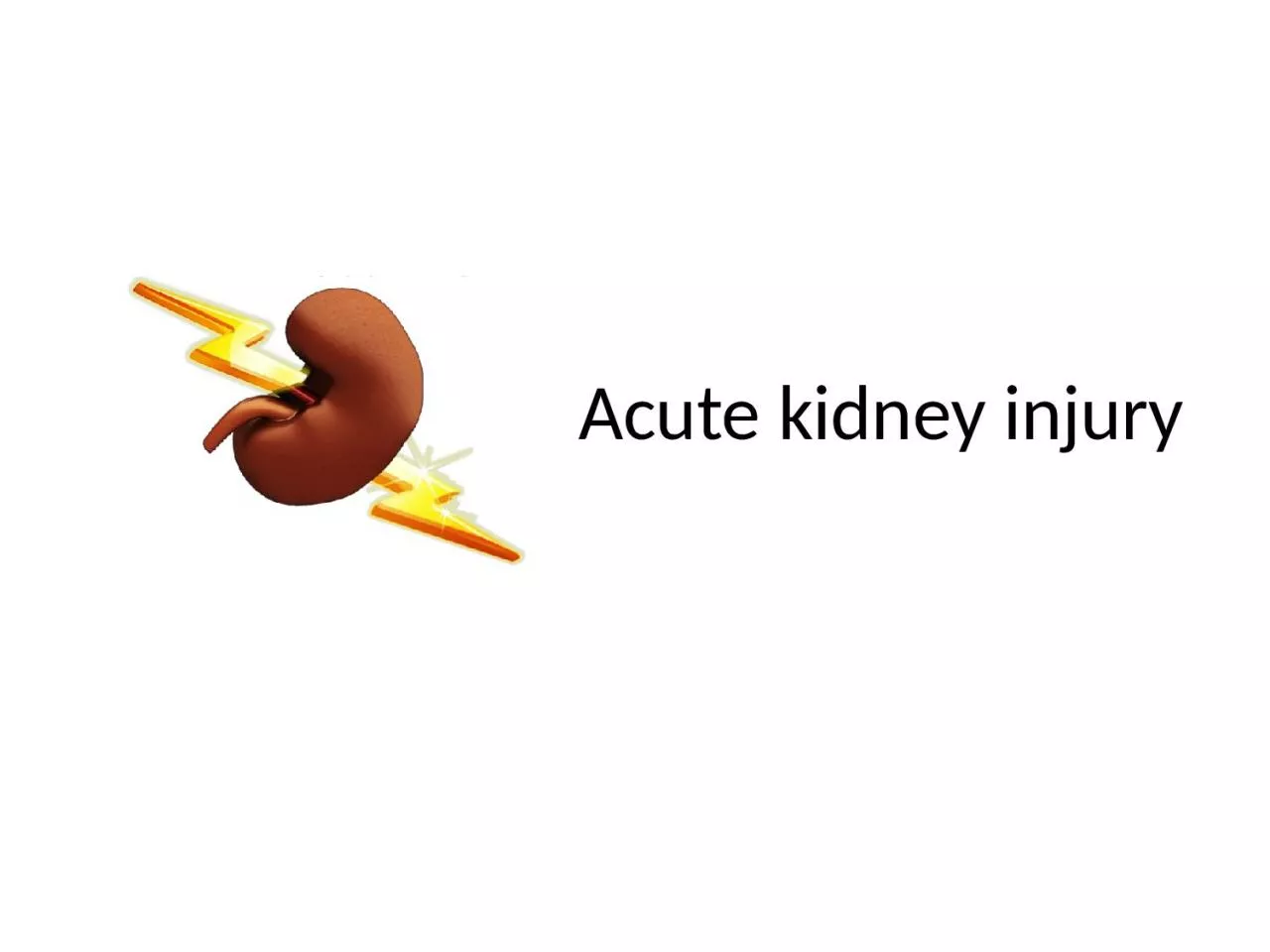

20 50 What you should know Acute renal failure or Acute kidney injury What means AKI Most frequent causes involved How to identify an AKI Where from should start our therapy Renal replacement therapy when to start ID: 1032968
Download Presentation The PPT/PDF document "Acute kidney injury Which is the incide..." is the property of its rightful owner. Permission is granted to download and print the materials on this web site for personal, non-commercial use only, and to display it on your personal computer provided you do not modify the materials and that you retain all copyright notices contained in the materials. By downloading content from our website, you accept the terms of this agreement.
1. Acute kidney injury
2. Which is the incidence of AKI in ICU??? 20% - 50%
3. What you should know…Acute renal failure or Acute kidney injury?What means AKI?Most frequent causes involved?How to identify an AKI?Where from should start our therapy? Renal replacement therapy – when to start?
4. Acute renal failure or Acute kidney injury?RIFLE RiskInjuryFailureLoss (RRT4 weeks)End stage(RRT3months)AKI - Acute Kidney Injury Stage IStage IIStage IIISEVERITYOUTCOME SEVERITY
5. What means AKI?AKI - an abrupt (within 48 hours) reduction in kidney function based on:Elevation in serum creatinine levelReduction in urine outputNeed for renal replacement therapyElevation in serum creatinine levelReduction in urine output
6. What means AKI?Increase in SCr by ≥0.3 mg/dl (≥ 26.5 mol/l) within 48 hours, ORIncrease in SCr to ≥1.5 times baseline, which is known or presumed to have occurred within the prior 7 days, ORUrine volume <0.5 ml/kg/h for 6 hours
7. AKI stages
8. Risk factors and causes of AKI
9.
10. PRE-renal or Intrinsic Renal origin FENa<1% - PRE Renal FENa>2% - Renal BUT not specific FE Na <1%:Diuretic therapy RabdomyolisysContrast induced nephropathyAcute glomerulonephritis Urinary tract obstruction
11. Management of AKI Management Adequate renal perfusion Avoid hypovolemia Hemodynamic stability
12. Adequate renal perfusionIsotonic solutions are preferredGoal of therapy / MAP > 65 mm Hg Vasopressors , If persistent hypotensionRenal-dose dopamine – NOT recommendedOptimize cardiac function (inotrop drugs, preload and afterload reduction )
13. Electrolyte imbalances HyperkalemiaHyperphosphatemia Hypermagnesemia Hypo-, hypernatremiaMetabolic acidosisHyperkaliemia
14. Hyperkalemia induced ECG changes
15. Hyperkalemia and cardiac action potential
16. Hyperkalemia management
17. Renal replacement therapy
18. Indication for starting RRTIndication commentsAnuria or oliguria Urine volume<200ml/12 hHyperkalemia Serum porassium persistently>6,5 mmol/lSevere acidaemia pH<7,1Serum ureea>30mol/l , ORCreatinine>300 mol/l Value are not absolute, only a guideRefractory fluid overload Especially in compromised lung function Uraemic complication Encephalopathy, pericarditis , neuropathy or myopathy Temperature control Hyper- and hypothermia Drug overdoseSepsis
19. Summary Renal failure – frequent phenomena in ICU FIRST place - pre-renal origin Promptly treatment determines successEarly RRT save kidney
20.